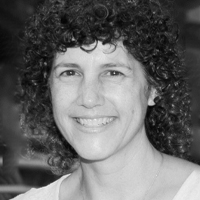Question
I am studying for the Assistive Technology Professional (ATP) exam. Can you explain AAC and what is considered AAC?
Answer
AAC
AAC stands for Augmentative and Alternative Communication. AAC is defined by ASHA, the American Speech Language Hearing Association. They define AAC as an area of clinical practice that supplements or compensates for impairments in speech-language production and/or comprehension, including spoken and written modes of communication. Augmented communication supplements existing speech. For example, perhaps someone has some difficulty with their speech and they might be difficult to understand or have difficulty communicating throughout the day. They might require their speech to be augmented by other strategies. Alternative communication replaces speech that's absent or not functional.
AAC uses a variety of techniques and tools that help someone express their wants, thoughts, needs, feelings, and ideas. It can include many different strategies such as manual signs like sign language or gestures. We all use gestures throughout our day. We might use finger spelling which is a specific type of manual signing. We might use tangible objects to point to something that we're talking about. We might use line drawings to represent something that we are communicating. There are also picture communication boards and letter boards that use just as it sounds, pictures, letters, and or symbols in a low-tech fashion. Someone can look at their desired vocabulary or touch their desired vocabulary or all the way up to our highest tech option which is a speech-generating device. Centers for Medicaid and Medicare refer to these as speech-generating devices, sometimes shorthanded to SGD. They might also be referred to as communication devices.
Unaided communication systems
For AAC, we might have unaided communication systems. Unaided communication systems include gestures, body language, and sign language. Ther term "unaided" is used because the patient does not have to carry something around with him/her. I have my method of communication on me. Instead of using my voice, I might be using sign language, for example.
Aided communication systems
Aided communication systems may include something as simple as pen and paper. It may also include the texting feature on your phone, communication boards, books, and devices that provide an actual voice input or written output so that someone can hear what I am telling them or they can read what I am telling them, or both. A SGD or speech-generating device produces speech or voice output. Typically there is a display that will also show what the person has just spoken, and that can be really handy. If it's a busy day and there is a lot of noise in the background, I may not have heard everything this person said. I can quickly glance down at their display and say, "Oh, hi, my name is Michelle" because perhaps they just asked me what my name is. An SGD produces speech or voice output as well as usually some type of displayed output of what has just been spoken. There are multiple access methods that allow someone to control the device. The displays are almost always dynamic now, meaning that the display can change. So let's say I have a home page and I select food. I want to tell you what food I would like to eat. I will now see a new page of all of my options for food-related vocabulary, and there are multiple communication strategies built into these very sophisticated devices.
Keep in mind that many people using a wheelchair may have difficulty with their communication, either difficulty understanding or being nonverbal. Those people need their communication devices with their wheelchairs. They may be controlling the communication device through a power wheelchair driving method, for example. There are a number of areas where our practice areas in assistive technology overlap, and this is certainly one of them.
This Ask the Expert is an edited excerpt from the course, Let’s Talk Augmentative And Alternative Communication: Preparing For The ATP Exam presented by Michelle Lange, OTR/L, ABDA, ATP/SMS
